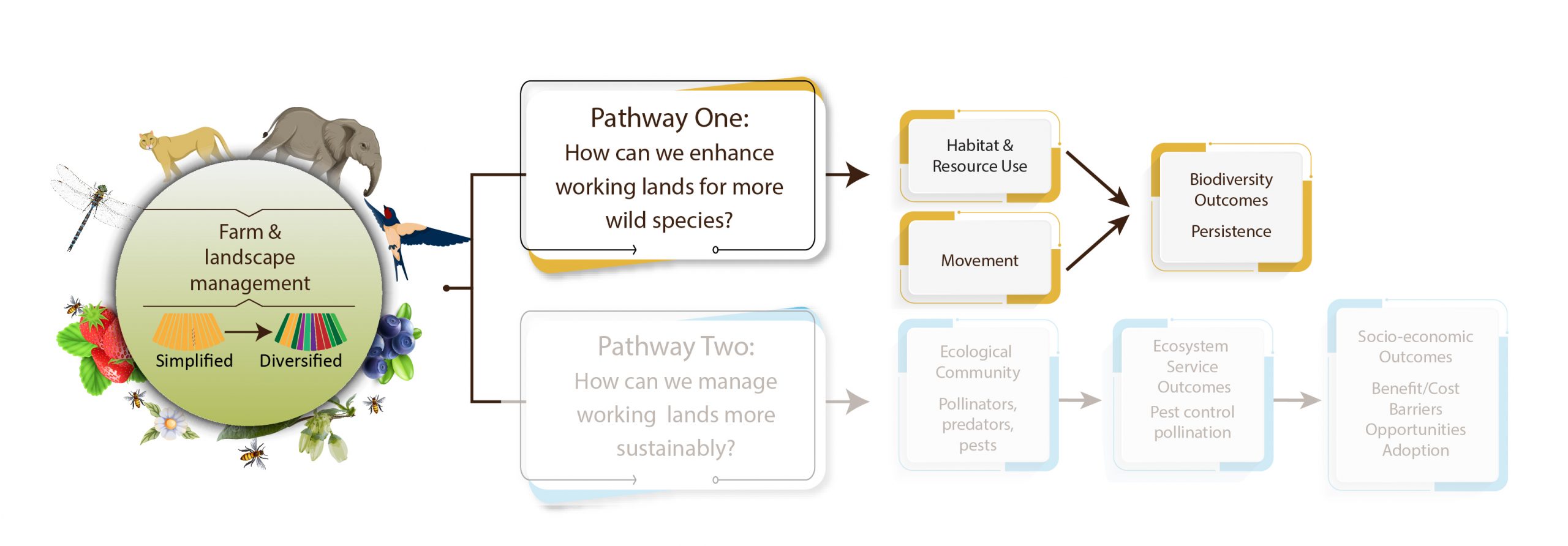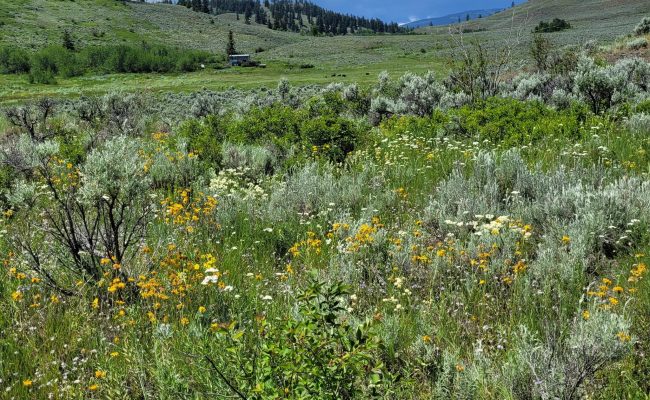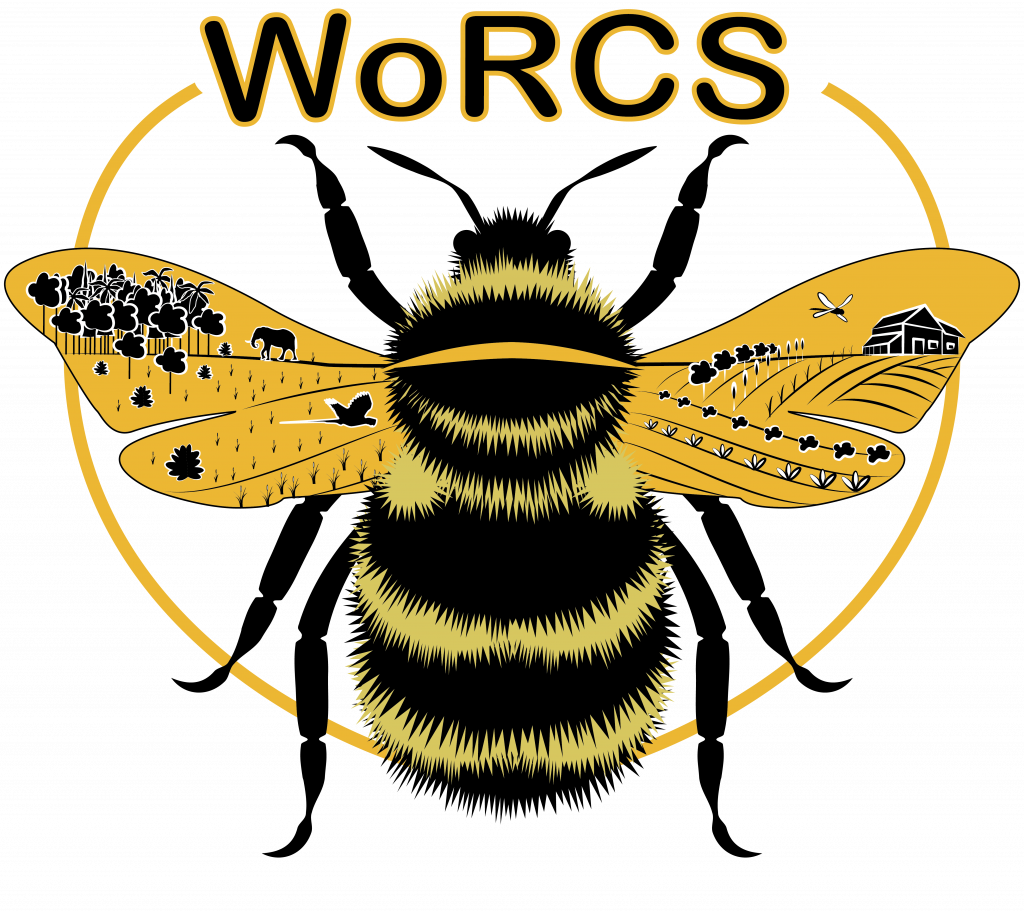1. How Can We Enhance
Working Lands for More Wild Species?
Conceptual Framework: Pathway One

In order to understand how agricultural working lands can support wild species, we must first understand how wild species use, live or move across working landscapes. For example, what components of the landscape are animals using for food, nesting, or mating purposes? Or how do animals such as elephants, birds, frogs or bumblebees navigate across farmlands? Do diversification practices provide more resources or help animals to move? Answering these questions at both local scales and within a global context can enable us to better design our agricultural landscapes to support positive biodiversity outcomes.
Research Themes
Habitat Use & Resource Use

The resources and habitats animals require are often not provided through conventional agricultural systems. Understanding how to supplement these lands to better suit the needs of wildlife is often varied and context dependent. Regardless, semi-natural to natural lands are valuable in providing resource needs to farmland wildlife.
Animals need to move. Prior to roads and human development they often traversed large ranges of land searching for food, mates, and shelter. Now most landscapes are dissected and perforated by often impassable or inhospitable features. Our working lands should not be one of these barriers. In fact, many animals can even benefit us by moving through farmlands or semi-natural zones. Birds can help remove pest insects, meso-predators can reduce rodent populations and pollinators can provide pollination to key crops.
Animal Movement

Biodiversity Outcomes

Within a diversified landscape, one with varied microhabitats and admixture of cropping systems and a complex set of landscape structures we find biodiversity not only persists but grows.
